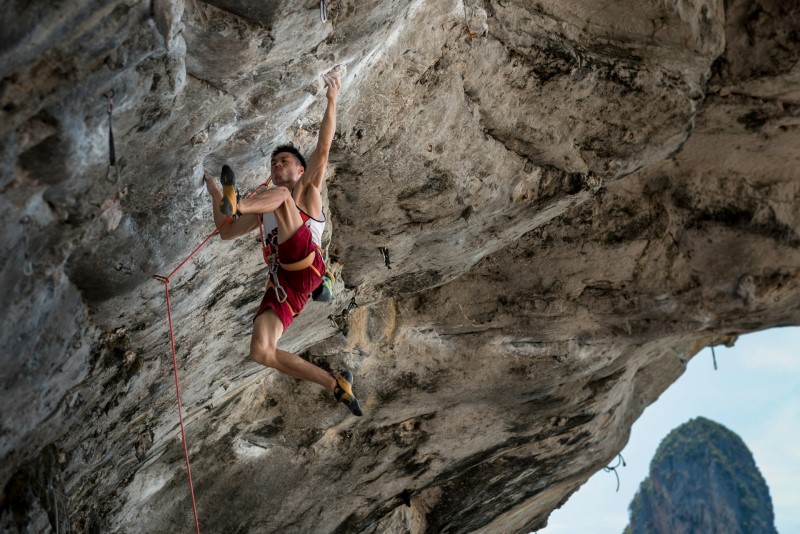outdoor adventure
Essential Gear for Rock Climbing: Must-Haves for Beginner and Intermediate Climbers
Rock climbing is a thrilling and challenging sport that requires the right equipment to ensure safety, comfort, and performance. Whether you’re just starting out or advancing to more challenging climbs, having the essential gear can make a significant difference in your climbing experience. This article covers the must-have gear for beginner and intermediate climbers, helping you prepare for both indoor climbing sessions and outdoor adventures on real rock faces.
1. Climbing Shoes
Purpose-Built Footwear
Climbing shoes are specially designed to provide grip, support, and sensitivity while climbing. They feature sticky rubber soles that adhere to rock surfaces, helping you maintain traction and precision on footholds. Choose climbing shoes that fit snugly but comfortably, ensuring a secure fit without discomfort.
2. Climbing Harness
Safety and Comfort
A climbing harness is essential for attaching yourself securely to a rope during climbs. Modern harnesses are lightweight, adjustable, and padded for comfort. Look for a harness with multiple gear loops for organizing and carrying essential equipment such as carabiners, quickdraws, and belay devices.
3. Belay Device and Carabiners
Safety and Control
A belay device is crucial for controlling the rope during belaying—a technique used to protect a climber in case of a fall. Popular types include tubular devices like ATCs (Air Traffic Controllers) and assisted braking devices like GriGris. Pair your belay device with locking carabiners, which are used to connect the belay device to your harness and secure other climbing equipment.
4. Climbing Rope
Dynamic and Static Ropes
A climbing rope is your lifeline in rock climbing, designed to absorb the impact of a fall. Dynamic ropes stretch to reduce the force on both the climber and the anchor during a fall, while static ropes are used for specific applications like rappelling or hauling gear. Choose a rope that meets safety standards, appropriate for your climbing style and environment.
5. Chalk and Chalk Bag
Grip and Moisture Control
Chalk helps absorb moisture from your hands, improving grip and reducing the risk of slipping. Carry chalk in a chalk bag attached to your harness for easy access during climbs. Some climbers prefer liquid chalk for longer-lasting grip, while others use chalk balls to minimize dust.
6. Climbing Helmet
Protection from Falls and Debris
A climbing helmet is essential for protecting your head from falling rocks, debris, or impacts during a fall. Choose a helmet that fits comfortably and securely, with adjustable straps for a snug fit. Look for helmets certified to safety standards (e.g., UIAA or CE) to ensure adequate protection.
7. Quickdraws and Slings
Anchor and Protection
Quickdraws are used to connect the climbing rope to bolts or anchors on the rock face, providing protection against falls. They consist of two carabiners connected by a strong sling. Slings (or runners) are versatile nylon or Dyneema loops used for extending protection placements, building anchors, and carrying gear.
8. Climbing Protection
Nuts, Cams, and Hexes
Traditional climbing (trad climbing) often requires passive and active protection devices such as nuts, cams, and hexes. These devices are placed into cracks and crevices in the rock to create anchor points and protect against falls. Familiarize yourself with their usage and choose sizes appropriate for the rock formations you’ll encounter.
9. Approach Shoes
Footwear for Hiking and Scrambling
Approach shoes are sturdy, grippy shoes designed for hiking to climbing areas and scrambling over rocky terrain. They provide traction and support for approaches and descents, ensuring comfort and stability on uneven surfaces.
10. First Aid Kit and Safety Essentials
Emergency Preparedness
Carry a compact first aid kit containing essentials like bandages, antiseptic wipes, and blister treatments for minor injuries. Include a headlamp or flashlight, a multi-tool, and an emergency blanket for unexpected situations or overnight stays.
Conclusion
Having the right gear is essential for enjoying rock climbing safely and effectively. Whether you’re a beginner exploring indoor climbing gyms or an intermediate climber venturing onto outdoor crags, investing in quality equipment tailored to your needs will enhance your climbing experience. Prioritize safety by learning proper usage and care of your gear, and consider seeking guidance from experienced climbers or instructors to improve your skills and confidence on the rock. With the right gear and preparation, you can embark on exciting climbing adventures while staying safe and comfortable in the vertical world.

